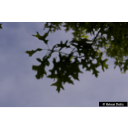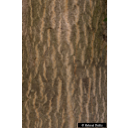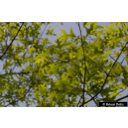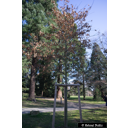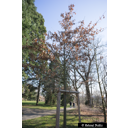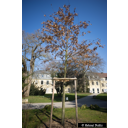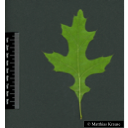Useful information about the taxon (species, subspecies, variety...)
Quercus palustris Münchh. 1770
Fagaceae
(APG IV)pin oak, swamp oak, swamp Spanish oak
Akzessionnummer: EG-E-059-1672
Pflanzjahr: 2017
Patenschaftstext: 75 Jahre PAX CHRISTI Frieden muss wachsen
Taxon concept: The Plant List (2014), version 1.1
Distribution: eastern Canada; central, northeastern and southeastern United States incl. Kansas
Quercus palustris Münchh. - Accepted: Quercus palustris Münchh. bei Zander 2008; Familie: Fagaceae (Zander 2008)Quercus palustris Münchh. - Accepted: Quercus palustris Münchh. bei The Plant List (2010); Familie: Fagaceae (APG III)Quercus palustris Münchh. - Accepted: Quercus palustris Münchh. bei The Plant List (2014), version 1.1; Familie: Fagaceae (APG III)Quercus palustris Münchh. - Accepted: Quercus palustris Münchh. bei The Plant List (2010); Familie: Fagaceae (APG IV)Quercus palustris Münchh. - Accepted: Quercus palustris Münchh. bei BfN Checklist Flora DE; Familie: Fagaceae (APG IV)
- Flowers
- monoecious; male flowers in drooping catkins on preceding year twigs, female flowers in short spikes on current year shoots
- Flower ecology
- wind-pollinated (anemophilous)
- Life form
- tree
- Foliage persistence
- deciduous
- Fruits
- acorns with a maximum length of 1.3 cm (0.5 inches)
- Fruit ecology
- animal-dispersed (zoochorous) (squirrels, mice, blue jays, woodpeckers)
- Soil conditions
- on acidic, poorly drained, clay to clayey loam soils
- Root type
- shallow root system
- Natural occurrence (habitat)
- bottomland deciduous forests (mixed with sweetgum, white oak, American elm, red maple), floodplain forests, wet bottomlands along rivers
- Vegetation typ and synecology (plant community)
- temperate, mixed mesophytic deciduous forests
- Constraints according temperature
- susceptible to fire
- Constraints according radiation (light)
- intolerant of shade
- Constraints according habitat
- tolerant of acid rain and smoke
- Usage
- for construction timbers, fuel and mine props; planted as shade and ornamental tree
- Phytopathogenic organisms
- susceptible to Oak Wilt caused by the fungus Ceratocytis fagacearum
Erhardt, W., Götz, E., Bödeker, N. & Seybold, S. (2008): Der große Zander. Enzyklopädie der Pflanzennamen. Band 2. Arten und Sorten. Eugen Ulmer KG, Stuttgart (Hohenheim), 18. Aufl., 2103 S.; Haider, M. et al. (2005): Wildbienenkataster. See: https://www.wildbienen-kataster.de; Ministerium für Ernährung, Landwirtschaft, Umwelt und Forsten, Baden-Württemberg (Hrsg.) (1985): Pflanzenkatalog zur Verbesserung der Bienenweide und des Artenreichtums (Kurztitel: Bienenweidekatalog); Schick, B. & Spürgin, A. (1997): Die Bienenweide. Eugen Ulmer Verlag, Stuttgart, Auflage: 4., völlig neubearb. u. erw. A., 216 S. 978-3800174188.; The International Plant Names Index (2009). Published on the Internet http://www.ipni.org; Courtesy to IPNI, 2009. Exported from IPNI at date: 2009-09-22 20:17:51; Westrich, P. et al. (2018): Die Wildbienen Deutschlands.. Ulmer Verlag ISBN 978-8186-0123-2.;
Diese Webseite verwendet Google Maps, um Karten und Standorte von Pflanzen in den Hohenheimer Gärten anzuzeigen. Dadurch werden unter Umständen Daten an Google weitergeleitet, was mit einer Verarbeitung Ihrer personenbezogenen Daten verbunden sein kann. Die Datenschutzerklärung von Google finden Sie hier: Datenschutzerklärung von Google

